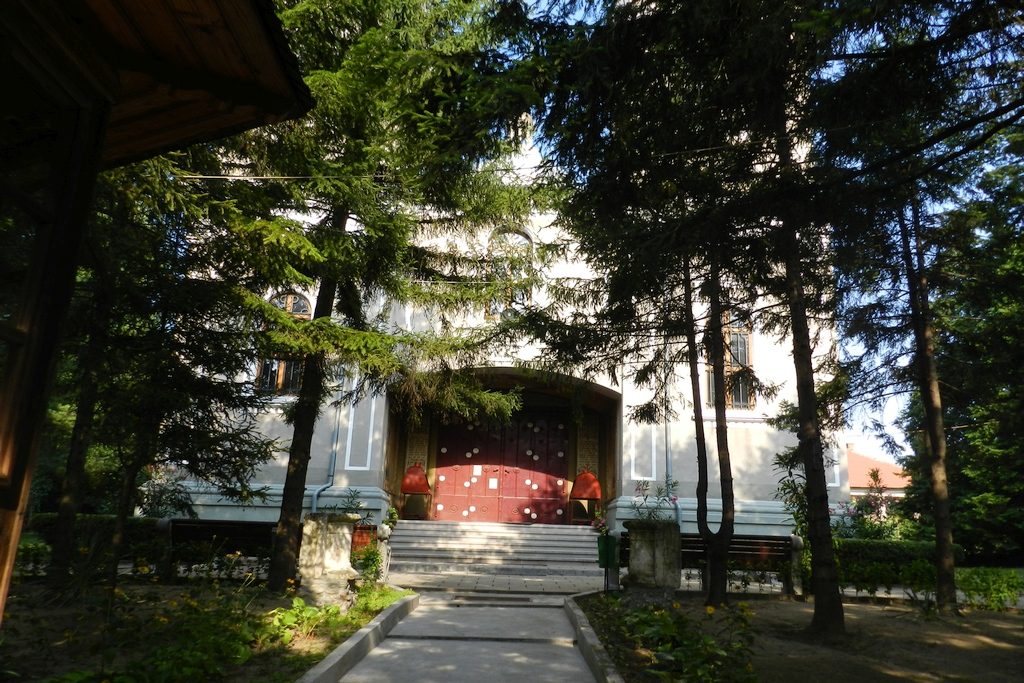

The “Life – giving spring” church from the municipality Calafat, also known under the name of the “Greek” church was built up between the years 1864 – 1874.
The land had been donated by its founder, Hagi Panait Theodoru, being situated in the most graphic and the highest place of the city, at a height of over 70 meters above the level of the Danube, having a beautiful view to the Danube and Vidin.
The place of worship is in a conch shape, with solid walls of over one meter width, it has three domes, two on the narthex and one on the nave, which are supported on solid piers in a square shape, with the side of one meter.
The interior of the church is embellished by four candelabrums of veritable crystal of Murano.
In the nave, on the right side, at the view, there is an epitaph of great finesse, executed by a seam in basso-relievo from thread of gold and silver, representing the scene of putting Jesus Christ in the tomb.
During the Independence War, the church has suffered serious damages, being hit by the enemy bombshell, which completely destroyed its dome.
This thing is recorded by the report drafted by the commander of the city’s artillery, where it is mentioned that: “17 hits where pointed towards the Greek Church, where there was found the observer officer and the telegraphic station; a bombshell hit the church’s door, entered inside, exploded and crushed the ornaments; another one entered in the roof, a third one hit the tower. Following these, the officer couldn’t make anymore the observations because of the noise and of the dust cloud. A forth bombshell enters the window from the front of the church breaking the lattice work obstacles, makes an explosion inside, destroying and hitting more parts from the interior, a fifth one hits the tower from the middle passing through the windows which he takes out from the masonry and, finally, the sixth one falls inside the church, breaking the wires of the conductors and of the devices.
Starting with this moment, the officer, as well as the telegraphers of the genius was enforced to leave the church in order to take refuge in the back and in the sides after a border of land.”
Throughout the time, the place of worship was restored thanks to the contributions of the church-goers and of the local officials, being revived its once upon a time brightness.
